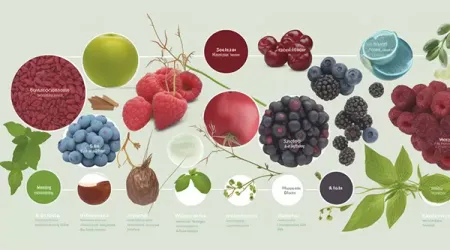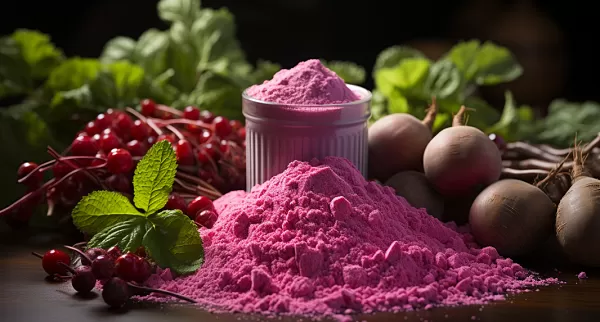- 0086-571-85302990
- sales@greenskybio.com
Lycopene: The Antioxidant Powerhouse from Tomatoes
2023-08-11
Introduction
Definition of Lycopene
Lycopene, often translated as lycopene in Chinese, is a natural red pigment belonging to the carotenoid family. It is found in many red fruits and vegetables, but the main source is tomato. This pigment not only gives tomatoes their bright red color, but has also been extensively studied and established to have several health benefits.

Source of Lycopene
While Lycopene is found in many red fruits and vegetables, such as watermelon, red grapefruit, and red peppers, its richest source is still the tomato. Especially ripe tomatoes and foods made from tomatoes, such as tomato sauce, tomato juice, tomato sauce, etc., contain a lot of Lycopene. In fact, the processing of tomatoes can make Lycopene more easily absorbed by the body, which means that processed tomato products usually provide higher bioavailability of Lycopene.
Extraction and production process
Lycopene extraction from tomato usually requires specific process techniques to ensure its activity and purity.
The main steps to extract Lycopene from tomato:
Crush and Pulp: Tomatoes are first crushed into a pulp for subsequent extraction.
Solvent extraction: Lycopene is extracted from tomato pulp using specific organic solvents such as acetone or ethanol.
Separation: Removal of unwanted solids and impurities by means such as centrifugation and filtration.
Concentration: The extract is evaporated at low temperature to concentrate Lycopene.
Purification: Lycopene is further purified to the desired specification using chromatographic techniques.
Crystallization: In order to obtain purified Lycopene solid, the final crystallization process is carried out.
Process Technology and Innovation
In recent years, with the advancement of technology, more innovative methods such as supercritical fluid extraction are being developed and applied to improve the extraction efficiency of Lycopene. In addition, researchers are looking for more environmentally friendly and sustainable methods to achieve a more efficient and low-cost extraction process.
Chemical and physical properties of Lycopene
chemical structure
Lycopene, a member of carotenoids, has a linear structure consisting of consecutive double bonds. The presence of these double bonds makes Lycopene a powerful antioxidant because they neutralize harmful free radicals.
physical properties
Color: Lycopene's pronounced red color is due to its specific molecular structure, which efficiently absorbs green and blue light, giving it its reddish appearance.
Solubility: Lycopene is non-polar, which means it is practically insoluble in water, but soluble in some organic solvents such as acetone and ethanol.
Stability: Compared with other natural pigments, Lycopene is relatively stable under the influence of light and heat. However, certain measures must still be taken to maintain its quality during handling and storage.
Health Benefits
Cardiovascular Health Benefits
Lycopene has been extensively studied as a natural cardiovascular protectant. Its antioxidant properties help reduce the oxidation of LDL cholesterol, thereby reducing the risk of cardiovascular disease.
Antioxidant
Lycopene's antioxidant properties allow it to neutralize harmful free radicals, thereby helping to prevent various chronic diseases.
Potential effect on cancer prevention
Some studies have shown an association between high intakes of lycopene and a lower risk of certain cancers, particularly prostate cancer. However, evidence for this is still being studied.
Benefits for Skin and Eyes
Lycopene protects the skin from UV radiation and helps prevent certain eye diseases, such as cataracts.
Application of Lycopene
food and drink
Functional food: Many health food brands add Lycopene to their products, such as health drinks, oatmeal and energy bars, to increase the nutritional value of the products.
Coloring agent: Lycopene has a bright red color and can be used as a natural food coloring agent, especially popular with those looking for natural food brands without chemical additives.
Beverages: Since Lycopene is more easily absorbed by the body in processed tomato products, tomato juice and other Lycopene-enhanced beverages are becoming more and more popular in the market.
cosmetic
Skin care products: Lycopene's antioxidant properties make it a popular ingredient in skin care products, especially anti-aging creams and lotions. Its anti-free radical properties can help fight the signs of premature aging, such as wrinkles and hyperpigmentation.
Sunscreen: Since Lycopene has some protection against UV radiation, it is also added to some sunscreen products to provide users with an extra layer of skin protection.
Medicines and Health Supplements
Health Supplements: As a natural antioxidant, Lycopene has been widely used in various health supplements to help prevent many diseases, including cardiovascular disease and certain cancers.
Drug development: Because of Lycopene's association with a range of health benefits, drug developers are interested in its potential role in the treatment of specific diseases, such as prostate cancer or cataracts.
Storage and Packaging
The storage and packaging of Lycopene is critical to ensure its stability and efficacy.
Storage: Lycopene must be stored in a cool, dry place away from direct sunlight and moisture. This minimizes its degradation and inactivation.
Packaging: For the packaging of Lycopene, it is very important to use materials that are safe and meet shipping standards. High-quality, closed packaging ensures that Lycopene is protected from oxygen, moisture and other harmful substances, thereby maintaining its purity and potency.
Source of Lycopene: Tomato
Tomatoes are one of the main sources of Lycopene, and the bioavailability of Lycopene actually increases when tomatoes are processed.
Processing of tomatoes: Processed tomato products such as tomato paste, tomato juice and tomato sauce contain higher concentrations of Lycopene. This is because the processing breaks down the tomato cell walls, making Lycopene easier for the body to absorb.
Bioavailability: Although fresh tomatoes contain Lycopene, its bioavailability is lower than that of processed tomato products. This means that by consuming processed tomato products, people can absorb Lycopene more effectively.
Other Sources of Lycopene
Lycopene is also found in other foods besides tomatoes.
Watermelon: Watermelon is another rich source of Lycopene. In fact, what gives watermelons their red or pink color is Lycopene.
Red pomelo: The pink or red flesh of this fruit is also caused by Lycopene, and red pomelo is a good source of Lycopene.
Paprika: Despite its lower content compared to tomatoes or watermelon, paprika is still a source of Lycopene.
How to Increase Lycopene Intake in Your Diet
Eat more tomato products: Consider including tomato paste, tomato sauce or tomato juice in your daily diet.
Choose supplements that contain Lycopene: If you find it difficult to ingest Lycopene through food, consider using a health supplement.
Include other sources of Lycopene: Including foods such as watermelon and red grapefruit into your diet is also a good idea.
Lycopene is gaining attention in the global food and pharmaceutical industries for its powerful antioxidant properties and multiple health benefits. Whether through your daily diet or supplements, increasing your Lycopene intake can help improve overall health and well-being.

Lycopene and Health Benefits
Lycopene's antioxidant properties provide it with a variety of health benefits, some of which are listed below:
Cardiovascular health: Studies have shown that regular intake of Lycopene can reduce the risk of cardiovascular disease. Its antioxidant effect helps to reduce the oxidation of LDL cholesterol, thereby preventing arteriosclerosis.
Anticancer properties: The antioxidant properties of Lycopene may help protect against certain types of cancer, especially prostate cancer.
Eye Health: Lycopene helps prevent age-related macular degeneration and other eye problems that can lead to vision loss or blindness.
Skin Health: Lycopene can help protect the skin from damaging UV radiation and may reduce the risk of sunburn.
Strengthens the immune system: Its antioxidant properties may help strengthen the immune system, making the body more resistant to various infections and diseases.
Lycopene Safety and Recommended Intake
Although Lycopene has many known health benefits, it is still necessary to consider its intake and possible side effects.
Recommended intake: Although there is no set fixed intake recommendation, the usual recommended intake is 10 to 30 mg per day.
Side effects: Lycopene is considered safe in most people, but excessive intake may cause reddened skin or stomach upset.
Interactions with Medications: People who are taking medications should consult with their physician before initiating Lycopene supplements to ensure that no adverse reactions will occur.

Conclusion
Lycopene is a powerful antioxidant that has several health benefits, from cardiovascular health to cancer prevention. People can benefit from consuming tomatoes and other food sources or through supplements. However, as with all health supplements, it is always recommended to consult a physician or nutritional professional before ingesting Lycopene to ensure safety and effectiveness.
-
citrus bioflavonoids benefits
2023-08-11
-
citrus bioflavonoids extract
2023-08-11














